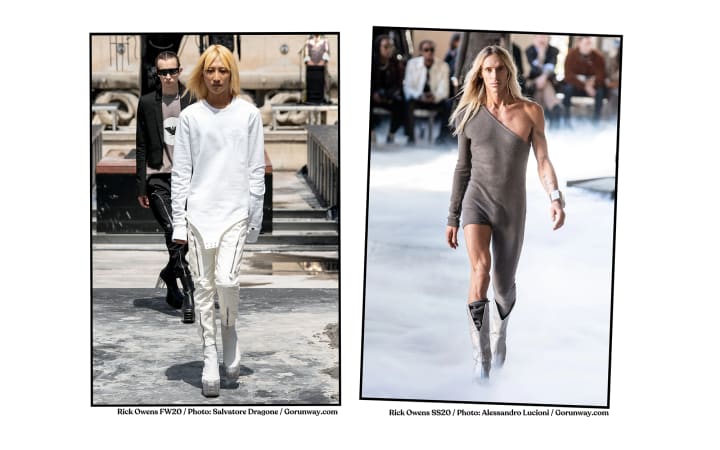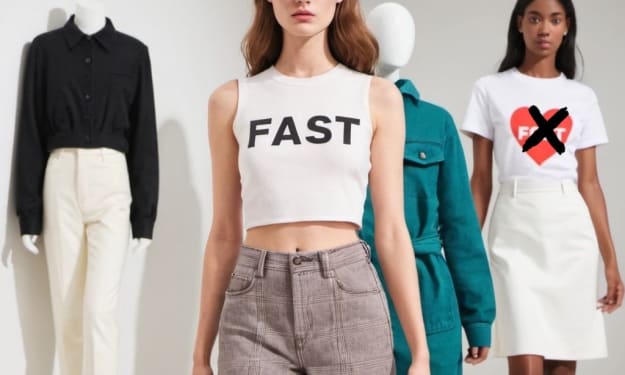Unisex Vs Gender Neutral Fashion - What's the difference?
Analyzing the various ways that fashion has delved into the world of genderless concepts.

You’ve seen it countless times again and again through fast fashion retail stores to high street boutiques, the term ‘unisex’ has become a common label for many brands. And as with many things it has also become a trendy statement by many companies to act as a case-all solution for inclusivity. But is it actually a suitable word to indicate your brand's diverseness? Or is it just an excuse for lazy fashion design.
Now I’m a huge advocate for unisex/gender-neutral design, I feel like the idea that a certain piece of clothing is specific to gender seems like a dated concept propagated by stereotypes of yesteryear. Personally, there are some items from the female side that I believe would look good on a male and vice-versa, but as how we’ve been raised it’s hard to shake off the idea that clothes are meant for one or the other. The concept of gender-neutral or unisex products is a great way to introduce to people, en masse, the idea of silhouettes that are different and allow them to explore fashion freely without judgement of what's expected to be worn by both genders.
Now there’s a whole list of factors that shaped the term “Unisex”, but I’ll keep it short. The term “Unisex” dates back to the 1960s where arguably the largest cultural shift was situated in the youth. The ’40s saw a boom in both the industry and in the bedroom as the population density grew for the succeeding decades. And as the youth outgrew the older generation in terms of size, the attention of companies shifted towards them as a new demographic to advertise to. Garments before this were heavily reliant on traditional tastes since what was culturally appropriate at the time were basically suits and dresses. The introduction of synthetic fabrics during the war was the gamechanger in how our fashion is built now, and ultimately allowing for cheaper and more relaxed styles to take place. Plus, imports from around the globe especially Paris allowed for a large influx of new tastes to spread communally. Bringing this all together are emerging designers who want to subvert the specific male/female clothing model such as Andre Courreges and Paco Rabanne. Thus, the idea of unisex was born, merging the stereotypical gender roles into a single entity.
The problem I have with unisex items is that it isn't pushing the boundaries in terms of what they're creating, the silhouettes are accommodating to both genders but aren't usually playful with what they create. Take for example ADER Error, a high fashion Korean brand that has fully embraced the unisex concept, has created garments that can be either sized up or down to fit the female or male body. Their collections usually feature both male and females wearing the same articles of clothing just to display their versatility. Personally, I love the aesthetics of Ader Error, their philosophy of “nothing is perfect” allows the design collective to look at garments with a new perspective and create pieces that are slightly off. However, you can see where the main problem lies. The unisex narrative is more accommodating towards the female side of fashion. This is such a shame since many female garments from across the fashion spectrum absolutely would look amazing on men too but lack compatibility due to sizing and social restrictions. Now Ader Error addresses this notion of a genderless future where cuts and sizes are favoured over specific gender roles but it's still clear to see that rather than accommodating to both genders it maintains a masculine tint towards a female market and not vice-versa.

On the other hand, “gender-neutral” I would see in the realm of gender-fluid or gender-less design which takes into consideration both parties at hand. I definitely believe that it’s a separate entity to unisex because it’s demands, and criteria differ greatly. While unisex offers accommodating sizes to all sexes, androgynous fashion tries to find a middle ground between both genders and designs clothing for male and women interchangeably. This is where we see silhouettes such as boxy large suits or flowing tight dresses drape over both body types. The concept originated during the ’40s as a way to create a more masculine style for women during the war but it was during the 1950s to the ’80s where it started to pick up steam as rock stars became synonymous with effeminate clothing like the skinny aesthetic and makeup. Avant-Garde was arguably the reason why it came into the mainstream as designers like Rei Kawakubo and Yohji Yamamoto challenged stereotypical silhouettes by just throwing the fashion rule book out the window and following their own vision. Rick Owens is a huge proponent in these with his runways boasting both female and male models wearing abstract creations that don't belong to any gender. You could see a man walk down with a skirt ensemble or a woman completely fitted in a Blazer suit combo and no one would bat an eye since he always subverts the notion of gender with his works. It’s this vision of a world where fashion exceeds gender is what Rick strives for and his playfulness with the garments is what makes him so iconic. But another problem arises, though the concept of gender-less purports inclusivity it still caters for a singular body type that the majority of the public don’t fit in. So, as someone trying to get into fashion without the right proportions might not be able to rock the items the way they’re intended for. This is a running theme in the fashion industry as runways are notorious for their lack of diversity.

That being said, you can argue that it’s the designer’s vision that matters and inclusivity in that sense are less important as the fashion you’ve designed should be presented as close to the vision and that would include what the model’s sizes are. Ultimately, unisex/genderless fashion is a broad category that achieves very different goals. In both cases, I do advocate the unisex and gender-neutral products as I find it somewhat silly gate-keeping certain products towards a particular gender. The generation right now does not care for what is expected to be worn but instead opts for garments that would reflect their personality as a whole. With the way, fashion is going now we're seeing a considerable shift towards a gender-neutral approach to design. Plus, with the array of events in the fashion world these past few years, we're seeing a push for inclusivity as well. I wouldn’t be surprised if the future of fashion will change to eliminate female and male collections and hold single runways. Whatever you like to phrase it, it seems like the genderless fashion trend is here to stay.
About the Creator
Jethrowastaken
Graphic Design student from the UK, Beginner interest in fashion and looking to expand my knowledge on all things design.







Comments
There are no comments for this story
Be the first to respond and start the conversation.